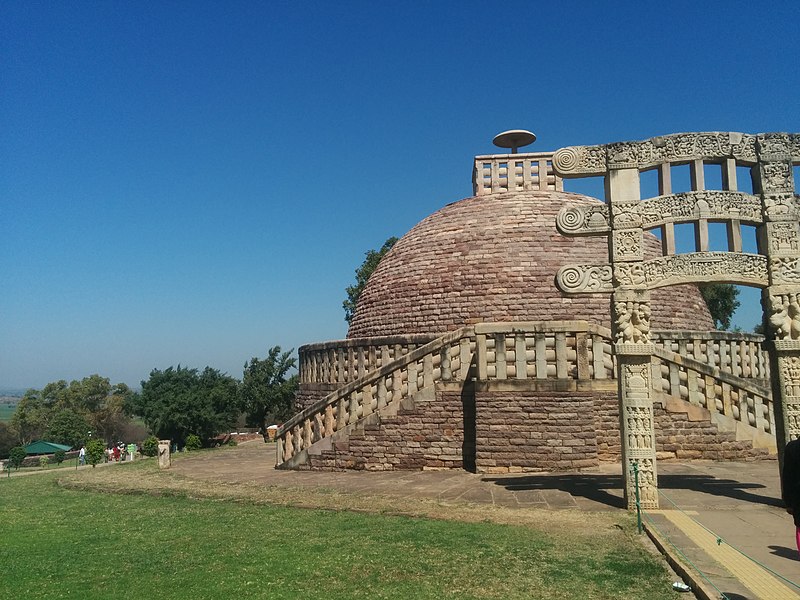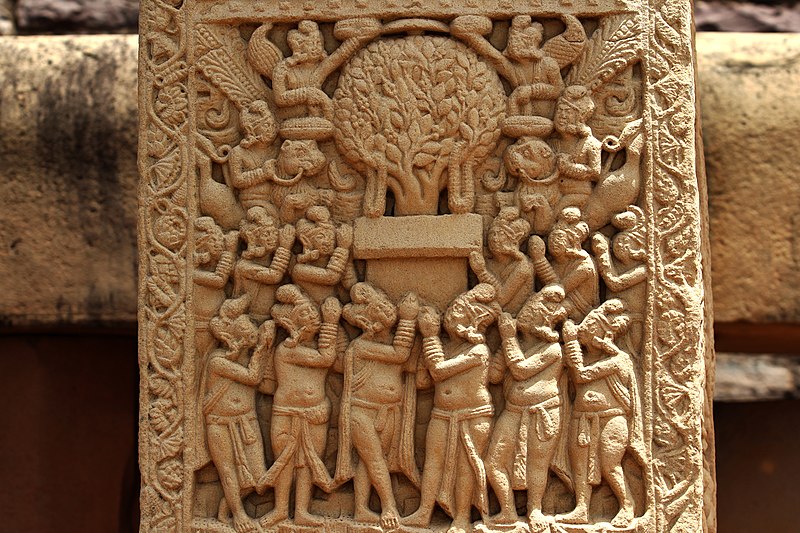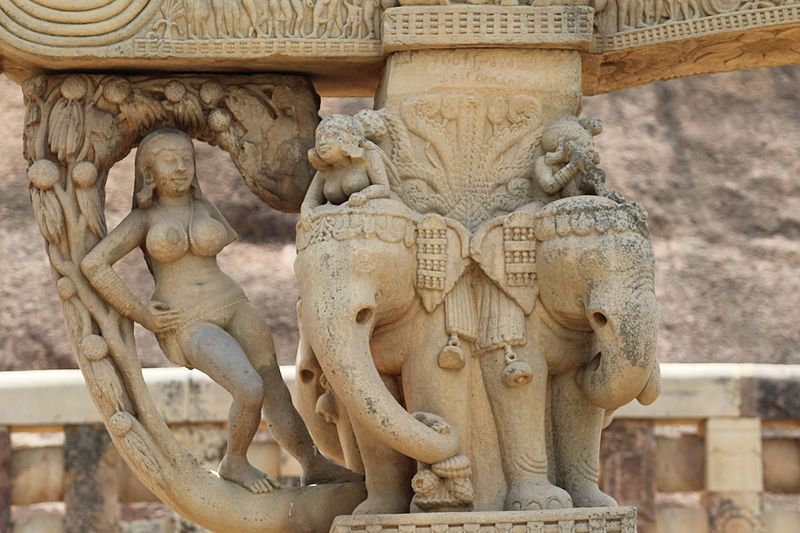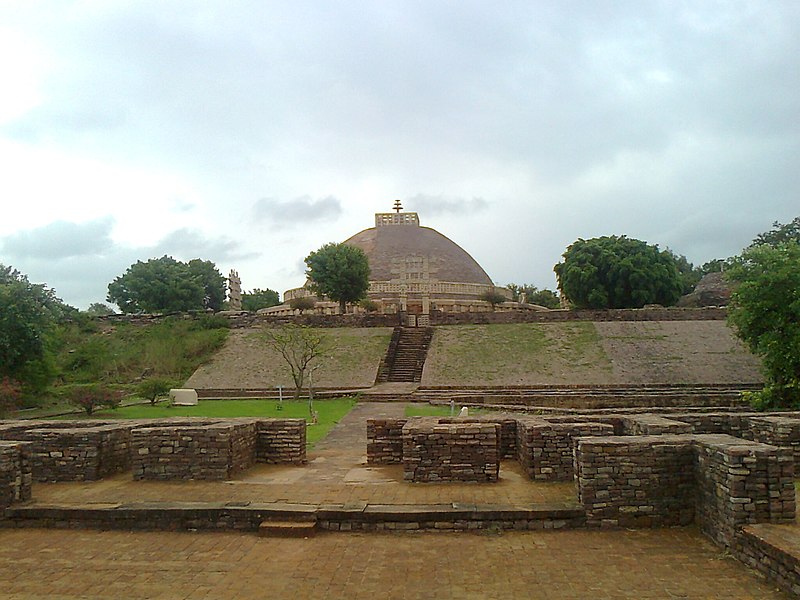Big Stupa in Sanchi
In the 3rd century BC, a Large Stupa temple was built in the Indian village of Sanchi by order of ruler Ashoka Maurya. There is a legend that it was built according to the project of the great Buddha himself. The temple is a symbol of the Wheel of Law (dharma), meaning a vicious circle of births and deaths (samsara). The large Stupa served as a model for the construction of all subsequent Buddhist temples.
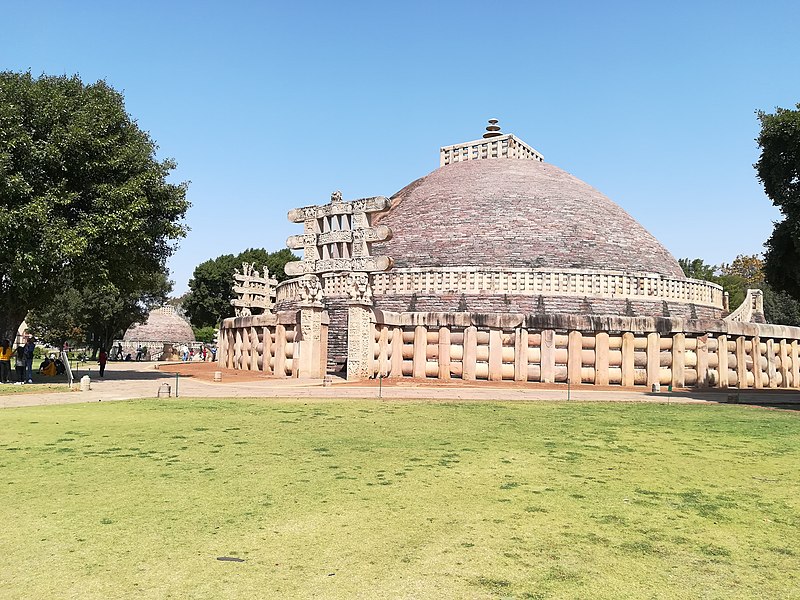
Initially, stupas were erected over the graves of the rulers as a monument. The stupa translates as "the top of the head" or "a pile of earth and stones." The dead were cremated, and the remains and ashes were placed in stupas. Graves in the usual European sense did not exist then.
A Buddhist temple is a set of fundamental symbols. The foundation (plinth) symbolizes the earth, the spherical vault is identified with the ascent of man to heaven and the world of the gods, the main pillar of the stupa, located in the center– is the axis of the world. The large stupa in Sanchi has no interior, it houses the remains of the great Buddha and several of his belongings. The Toran gate is of great historical importance. There are 4 of them in total. Each one shows symbols that signify some event from the life of the Buddha or related to him. At that time, real scenes were not depicted, but only certain symbols were applied. For example, the lotus is the birth, the wheel is the teaching of the Buddha.
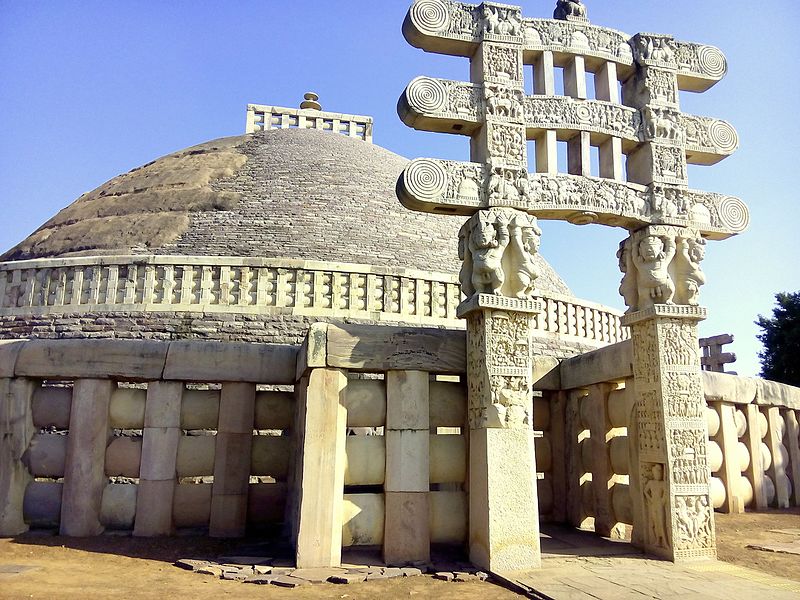
True Buddhists believe that stupas have a magical power of goodness, they are able to help people and those who come to them, bringing harmony into their lives. One of the Buddhist practices is the ritual circumambulation of the stupa in the direction of the sun's movement. There may be several such rounds over the course of several hours or several days. It all depends on the desire and strength of the believer. Lamas walk at least 108 times around the stupa. Stupas are a place of pilgrimage for Buddhists to perform both rounds and other rituals.
In the 2nd century BC, the Great Stupa was almost completely destroyed. The temple was restored for a long time, and as a result it became larger than it was before the destruction. The old brick stupa turned out to be inserted inside a new stone one. Now the height is 17 m, and the diameter of the base exceeds 36 m. As the years passed, the temple gradually changed and new elements were added nearby. Instead of the almost destroyed wooden fence, two large columns and four stone gates appeared.
The Great Stupa in Sanchi was a Buddhist pilgrimage site. But in the 12th century, Muslims and Islam won. Buddhist temples fell into disrepair, and some of them were destroyed. The village of Sanchi was almost deserted, it was covered with sand and overgrown with bushes. The church, and with it the village, gained its revival in 1819. English General Taylor accidentally discovered a Buddhist shrine. A century later, a whole historical complex was opened in Sanchi, including cave temples and a museum.
In 1989, the sights of Sanchi were included in the UNESCO World Heritage List.
